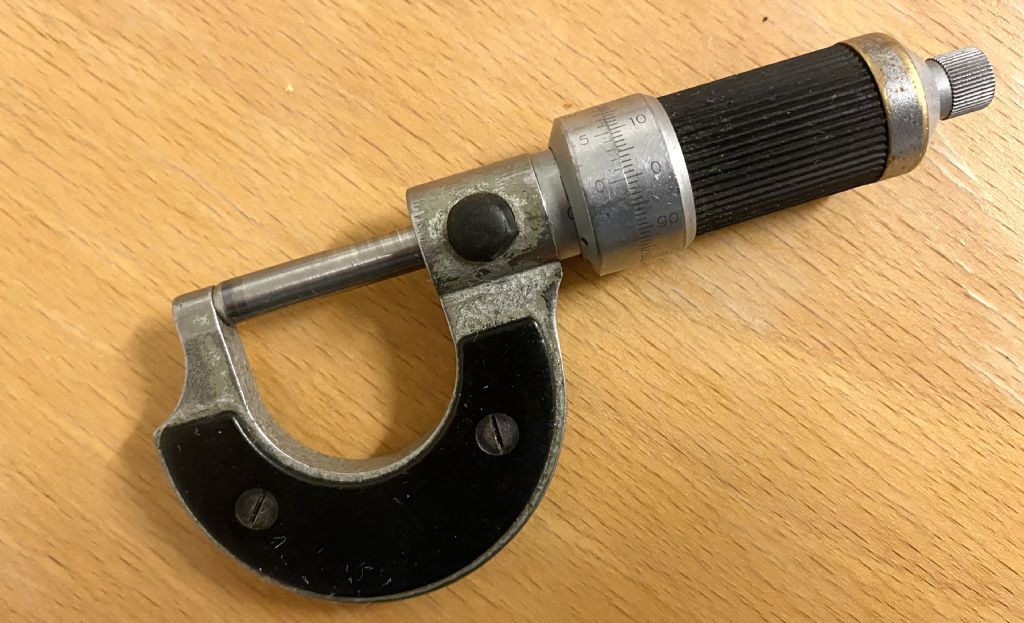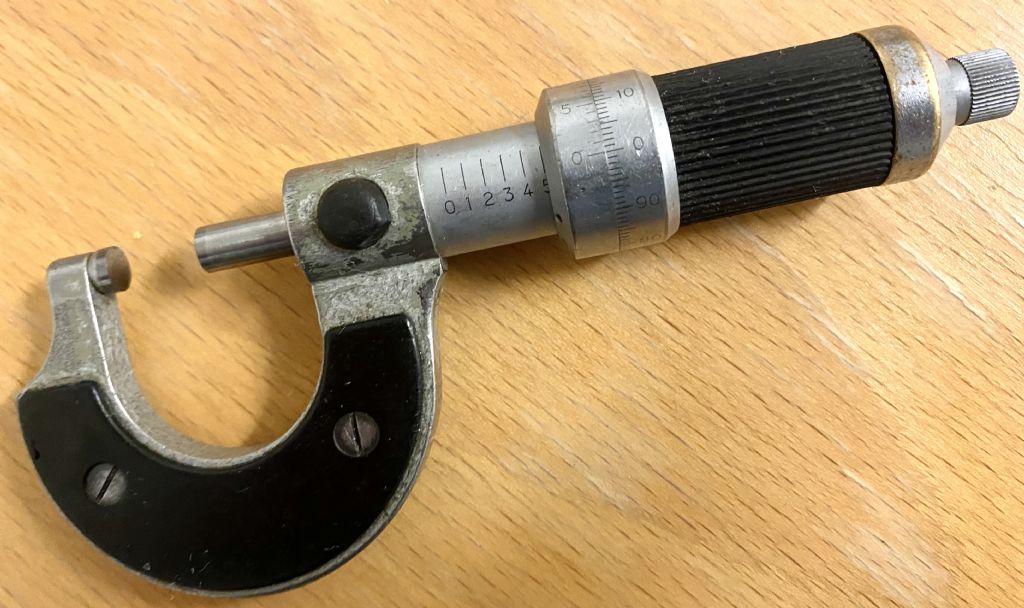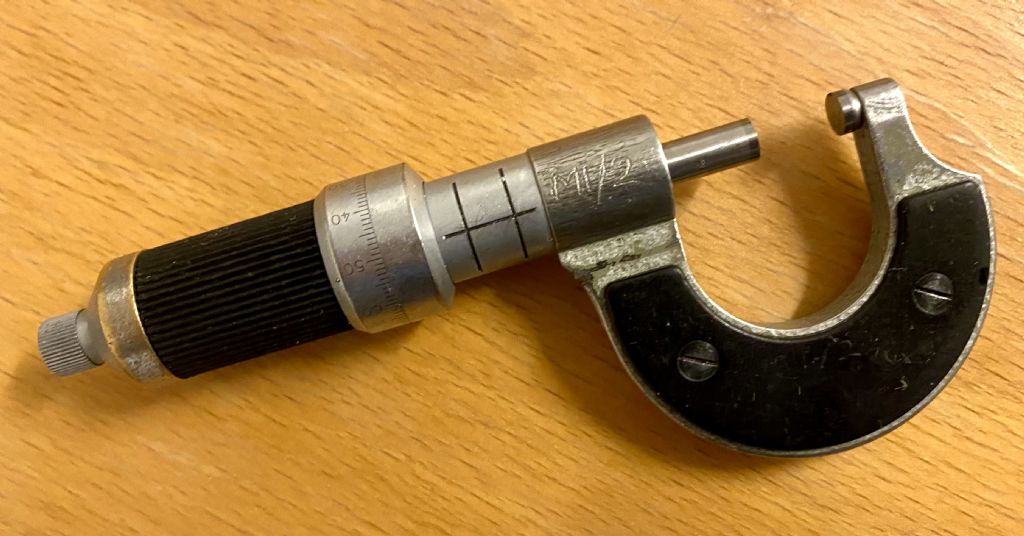Just to complete this tale, in case anyone searches for it in the future.
It now seems to be working OK and gives repeatable readings to a couple of tenths.
The sliding ring, with the tenths vernier, is on a ball race somehow attached to the main thimble;.
It locates in a groove along the main body's tubular thimble housing, via an internal plastic washer with two opposed lugs, which is able to be expanded with a small hooked tool, in my case a dental probe.
This allows one to take up any rotational slack on the sliding ring.
As mentioned above, the main thimble is on a double start thread with a 100 thou pitch, so one full rotation moves 1/10", i.e. four times as fast to adjust as a conventional imperial micrometer, which is 25 thou per turn.
When re-assembling, it seems to be pot luck as to whether the mic reads zero or 50 thou out; if the latter, just unscrew again until you feel the thread jump to the other half.
The main outer sleeve of the thimble, with the 100 graduations slides on the inner threaded part to allow alignment with the 10 divisions on the main body.
It's adjusted by screwing in a threaded plug down the end of the thimble.
I made an adjuster/plug out of brass hex, 7mmx 0.5mm pitch external, and drilled/tapped M4 threaded internal, so I could use a spare Allen screw I had in stock; I dropped a small ball bearing down the hole to act as a point contact.
With suitable padding and a small G clamp, the outer thimble sleeve could be slid inwards slightly too far, and then adjusted back to the correct position with the threaded plug.
The fine adjustment is the inner sleeve on the main body which rotates with a conventional micrometer C spanner.
It seems the imperial ones are no loner made and quite sought after.
Metric are still available, but the price is a bit scary, at about €500
https://trabiss.nl/shop/tesa-etalon-microrapid-226-micrometer/
See also this pdf for comparison with the TesaMaster, which seem to be priced as POA, so also probably beyond most of us new.
https://kyocera-unimerco-assets.com/api/DataSheets/TESA_C4_en.pdf
Bill
 peak4.
peak4.






